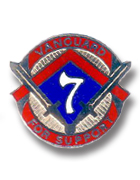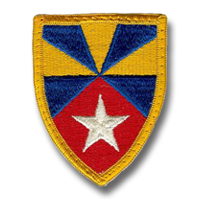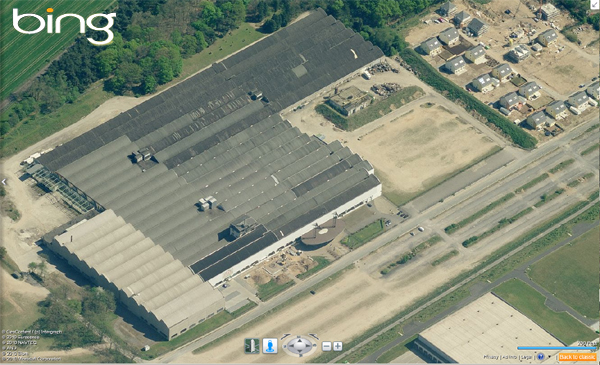|
7th
Support Command |
||||||||||||||||||||||||||||||||||||||||||||||||||||||||||||||||||||||||||||||||||||||||||||||||||||||||||||||||||||||||||||||||||||||||||||||||||||||||||||
|
|
||||||||||||||||||||||||||||||||||||||||||||||||||||||||||||||||||||||||||||||||||||||||||||||||||||||||||||||||||||||||||||||||||||||||||||||||||||||||||||
|
||||||||||||||||||||||||||||||||||||||||||||||||||||||||||||||||||||||||||||||||||||||||||||||||||||||||||||||||||||||||||||||||||||||||||||||||||||||||||||
|
|
||||||||||||||||||||||||||||||||||||||||||||||||||||||||||||||||||||||||||||||||||||||||||||||||||||||||||||||||||||||||||||||||||||||||||||||||||||||||||||
| History | ||||||||||||||||||||||||||||||||||||||||||||||||||||||||||||||||||||||||||||||||||||||||||||||||||||||||||||||||||||||||||||||||||||||||||||||||||||||||||||
 7th Support Command DI 7th Support Command DI |
||||||||||||||||||||||||||||||||||||||||||||||||||||||||||||||||||||||||||||||||||||||||||||||||||||||||||||||||||||||||||||||||||||||||||||||||||||||||||||
| 1978 - 1990 | ||||||||||||||||||||||||||||||||||||||||||||||||||||||||||||||||||||||||||||||||||||||||||||||||||||||||||||||||||||||||||||||||||||||||||||||||||||||||||||
(Source: History of 7th SUPCOM. 7SUPCOM Public Affairs Office, mid 1980s) |
||||||||||||||||||||||||||||||||||||||||||||||||||||||||||||||||||||||||||||||||||||||||||||||||||||||||||||||||||||||||||||||||||||||||||||||||||||||||||||
| The 7th Support Command, whose motto is "Vanguard for Support," has symbolized effective combat service support since its inception over 20 years ago. Formed on 1 July 1959 as the 7th Logistical Command, the unit was assigned for duty in the Republic of Korea and provided command and control of logistical support there until its inactivation on 1 August 1964. Only ten months later the Seventh Army Support Command was reactivated in West Germany and was assigned to United States Army Europe and Seventh Army. From its Headquarters in Worms, the command performed its support role until its second deactivation on 25 June 1969. The growing role of the US Army in the Northern Army Group region of Central Europe led to the latest activation of the unit in Kaiserslautern on 21 October 1978. Initially established as a planning cell subordinate to the 21st Support Command, its mission has increased in scope so as to now serve as the nucleus for organization and establishment of combat service support in northern Germany and the Netherlands. On 15 June 1982, Headquarters, 7th Support Command relocated from Kaiserslautern to its new command and control facility in Rheinberg, West Germany and is permanently located in the NORTHAG region. Today, the command is the principal logistics planning headquarters in NORTHAG, and as the vanguard for US Forces there, it focuses on the preparations to provide logistical support to US Forces operating in or passing through the Northern Army Group region and the Netherlands during times of peace and war. |
||||||||||||||||||||||||||||||||||||||||||||||||||||||||||||||||||||||||||||||||||||||||||||||||||||||||||||||||||||||||||||||||||||||||||||||||||||||||||||
Chronology of 7th Support Command (-) (Source: Chronology of 7th SUPCOM (-), HQ 7th Support Command, 6 March, 1981) |
||||||||||||||||||||||||||||||||||||||||||||||||||||||||||||||||||||||||||||||||||||||||||||||||||||||||||||||||||||||||||||||||||||||||||||||||||||||||||||
|
||||||||||||||||||||||||||||||||||||||||||||||||||||||||||||||||||||||||||||||||||||||||||||||||||||||||||||||||||||||||||||||||||||||||||||||||||||||||||||
Additional Input - Chronology of 7th Support Command |
||||||||||||||||||||||||||||||||||||||||||||||||||||||||||||||||||||||||||||||||||||||||||||||||||||||||||||||||||||||||||||||||||||||||||||||||||||||||||||
|
||||||||||||||||||||||||||||||||||||||||||||||||||||||||||||||||||||||||||||||||||||||||||||||||||||||||||||||||||||||||||||||||||||||||||||||||||||||||||||
ORGANIZATION AND FUNCTIONS (Source: Annual Historical Review, 1 January 1979 - 31 December 1979. HQ 7th Support Command, APO 09325) |
||||||||||||||||||||||||||||||||||||||||||||||||||||||||||||||||||||||||||||||||||||||||||||||||||||||||||||||||||||||||||||||||||||||||||||||||||||||||||||
Organization and Mission. As a result of the Supreme Allied Commander, Europe (SACEUR) initiative to improve US force capability for transition to war, Department of the Army (DA) approved the plan Project Forward, 12 April 1978. One recommendation in this plan is the forming of a support command (SUPCOM) in the Northern Army Group (NORTHAG) area. Hence, the 7th SUPCOM(-) was activated on 21 October 1978, per Department of the Army Permanent Order Number 43-4, dated 22 May 1978, under Table of Organization and Equipment 54412H. Located in building 3005, Panzer Kaserne, Kaiserslautern the 7th SUPCOM(-) is currently a subordinate planning cell of the 21st SUPCOM. This was in recognition that an austere active logistical command and control force element is necessary to accomplish the peacetime coordination and wartime planning for combat service for US forces in the NORTHAG area and the Netherlands, under the guidance and training of 21st SUPCOM. The 7th SUPCOM(-) element also will serve as the vanguard of the much larger logistical organization of the reserve component 310th Theater Army Area Command (TAACOM), now stationed at Fort Belvoir, Virginia. The eventual planned 7th SUPCOM(-) mission in peacetime will be to support all US forces in NORTHAG and in wartime to provide support in the Rear Combat Zone (RCZ) and the Communications Zone (COMMZ). Heraldic Entitlements. The 7th SUPCOM, as the lineral descendant of the 7th Army Support Command, inherited the shoulder sleeve insignia authorized for Headquarters, Headquarters Company and Special Troops, Seventh Army Support Command. The insignia was originally approved on 7 October 1966. |
||||||||||||||||||||||||||||||||||||||||||||||||||||||||||||||||||||||||||||||||||||||||||||||||||||||||||||||||||||||||||||||||||||||||||||||||||||||||||||
(Source: STARS & STRIPES, August 10, 1985) |
||||||||||||||||||||||||||||||||||||||||||||||||||||||||||||||||||||||||||||||||||||||||||||||||||||||||||||||||||||||||||||||||||||||||||||||||||||||||||||
The 7th Army Support Command, with headquarters in the Reichel Building at Rheinberg (about 10 miles north of Duisburg, Germany), is the major US Army supply command in the NORTHAG area. Its mission is to provide wartime planning and logistical support to an area covering approx. 20,000 square miles. The command was set up as part of a strategy established in the late 1970s to beef up American forces on the northern plains of Germany which has, historically, been an invasion route for invaders from Eastern Europe. (See the 2nd Armored Division (Forward) Page for more on this topic.) Present commander of 7th Army SUPCOM is Col Robert L. DeGrant. As part of the logistical planning the support command is involved with are the forward supply depots being established in the NORTHAG area. The sites that will eventually hold about $4 billion worth of wartime supplies and will supply six combat divisions that would be flown over as reinforcements during an emergency (which is part of the NATO agreement negotiated during the Carter administration). Nine equipment storage sites (CEGE) and three ammunition sites (60th Ord Gp) have already been established in northern Germany. Five additional equipment sites and four more ammunition sites are planned to be established by the end of FY 1989. (One of the problems confronting 7th SUPCOM currently is the lack of a computer mainframe at Rheinberg to automate more of the logistics management tasks. A mobile unit is available - probably in southern Germany - but the workloads at the command do not justify its assignment to Rheinberg.) Another obstacle that the command has to be concerned with is the lack of funding ($15 million) for purchasing the Reichel Building. Although approved by Congress, the appropriation of the funds is still missing. The outright purchase of the building would allow the command to make necessary modifications to the building which would significantly streamline operations and allow for the use of 1.2 million square-foot of storage space behind the building. |
||||||||||||||||||||||||||||||||||||||||||||||||||||||||||||||||||||||||||||||||||||||||||||||||||||||||||||||||||||||||||||||||||||||||||||||||||||||||||||
| Drawdown (1990) | ||||||||||||||||||||||||||||||||||||||||||||||||||||||||||||||||||||||||||||||||||||||||||||||||||||||||||||||||||||||||||||||||||||||||||||||||||||||||||||
(Source: STARS & STRIPES, June 20, 1990) |
||||||||||||||||||||||||||||||||||||||||||||||||||||||||||||||||||||||||||||||||||||||||||||||||||||||||||||||||||||||||||||||||||||||||||||||||||||||||||||
| On June 18 1990, an official ceremony was held at the Reichel Building, Rheinberg, to inactivate the 7th Theater Army Area Command, the 54th Area Support Group and the 11th Finance Support Unit. The closing of the Rheinberg military community and the logistical command units located there had originally been announced by USAREUR in February 1990. After a ten-month review of Rheinberg operations conducted by USAREUR, theater headquarters decided to close the northern Germany installation as a way to save money and utilize resources more effectivelly elsewhere. It is estimated that the closure will save USAREUR about $135 million in operational costs over the next five years. The mission of the 54th ASG has been transferred to the 29th ASG and the 21st Theater Army Area Comd (both in Kaiserslautern). Other units that are/were stationed at Rheinberg have reduced their operations or been transferred: Rheinberg Regional Contracting Office; Rheinberg Field Office of the 256th MP Co (customs unit); Rheinberg Det, CID; detachment of the 532nd Sig Co; 111th Postal Co. Most of Rheinberg's support activities (PX, medical services, etc.) are being shifted to the Shinnen military community. In July, the majority of the personnel still left at Rheinberg will leave. Only a small group will be left to handle final closure activities. The installation is scheduled to close officially on Sept. 30. Since the US Army has moved into the Reichel Building (1982), it has spent $21 million in improvements on the facilities. No decision has been made yet as far as future plans for the installation: the Army could keep it on caretaker status (facility would remain empty but be kept ready to occupy sometime in the future) or to dispose of it. |
||||||||||||||||||||||||||||||||||||||||||||||||||||||||||||||||||||||||||||||||||||||||||||||||||||||||||||||||||||||||||||||||||||||||||||||||||||||||||||
| Newspaper articles | ||||||||||||||||||||||||||||||||||||||||||||||||||||||||||||||||||||||||||||||||||||||||||||||||||||||||||||||||||||||||||||||||||||||||||||||||||||||||||||
(Source: Support Sentinel, October 31, 1978) |
||||||||||||||||||||||||||||||||||||||||||||||||||||||||||||||||||||||||||||||||||||||||||||||||||||||||||||||||||||||||||||||||||||||||||||||||||||||||||||
| Activation of the 7th SUPCOM By Mark Swearengen |
||||||||||||||||||||||||||||||||||||||||||||||||||||||||||||||||||||||||||||||||||||||||||||||||||||||||||||||||||||||||||||||||||||||||||||||||||||||||||||
| The activation of the 7th Support Command, which will provide combat service support in the Northern Army Group Region of central Europe, was announced Oct. 21, by the 21st Support Command. Now in its early stages of development, the 7th Support Command will initially remain a subordinate unit of the 21st Support Command. It will ultimately become an independent unit and perform its important mission under the control of the U.S. Army, Europe, and Seventh Army. The new headquarters is located at Panzer Kaserne in Kaiserslautern, Germany, but will move eventually to a more permanent facility in its ultimate area of operations. Two areas are under consideration for a permanent location: Moenchengladbach, Germany, and Brunssum, The Netherlands. Col. Mark L. Reese Jr., Commander of the 7th Support Command, explained that, once established at the permanent location, the command will have a threefold support function. First will be the receipt, storage, maintenance and issue of the prepositioned material configured to unit set (POMCUS) to be located in Northern Germany and the Benelux. The second major role will be to provide combat service support to augmentation forces that would be moved into the Northern Army Group region in time of tension or war. Also during emergency build-up, the command would perform its third role -- to serve as a nucleus for the establishment of operations within a communications zone in its area of responsibility. Other functions included in these primary support roles will be the establishment of a material management center and coordination of host nation support. "The command will grow to nearly 100 military personnel on a phased schedule beginning in 1979," explained Col. Reese. "And this arrangement of working initially under the control of the 21st Support Command is beneficial while we are still a relatively small unit. This gives my staff the opportunity to draw on the experience and expertise of the 21st's staff elements. As soon as necessary resources are provided, we will begin our move to a permanent location," he continued. A 1954 graduate of the United States Military Academy at West Point, Colonel Reese commanded the 1st Battalion, 27th Infantry "Wolfhounds" with the 25th Infantry Division in Vietnam in 1968. He served as the Assistant Chief of Staff, G-1, in Berlin from 1972 through 1974, and his most recent assignment was with the staff of the Supreme Allied Command, Atlantic, in Norfolk, Virginia. His awards include the Silver Star and Legion of Merit. |
||||||||||||||||||||||||||||||||||||||||||||||||||||||||||||||||||||||||||||||||||||||||||||||||||||||||||||||||||||||||||||||||||||||||||||||||||||||||||||
 |
||||||||||||||||||||||||||||||||||||||||||||||||||||||||||||||||||||||||||||||||||||||||||||||||||||||||||||||||||||||||||||||||||||||||||||||||||||||||||||
(Source: Traveler (Rheinberg MILCOM newspaper), June 1988) |
||||||||||||||||||||||||||||||||||||||||||||||||||||||||||||||||||||||||||||||||||||||||||||||||||||||||||||||||||||||||||||||||||||||||||||||||||||||||||||
| MMC continues mission growth |
||||||||||||||||||||||||||||||||||||||||||||||||||||||||||||||||||||||||||||||||||||||||||||||||||||||||||||||||||||||||||||||||||||||||||||||||||||||||||||
Activated just over a year ago and now almost 50 percent operational, the 7th SUPCOM Materiel Management Center is rapidly attaining the goal of becoming fully operational. Upon completion, the MMC will have a peacetime role that compliments the timely execution of transition to war, according to Maj Stancey Halstead, the MMC commander. In order to obtain this goal, however, the MMC will have to continue the transfer of support for materiel management in the NORTHAG area from the 9th Support Center. On April 1, the 583rd Ord Co Supply Support Activity transfer was completed on schedule, and became the third customer along with the USMCA the Netherland's SSA and the 54th ASG's 8017th Civilian Support Group SSA to join the MMC customer list. Target dates for other transfers to the customer list are: In June, the 96th, 99th and 162nd Ord Cos; in July, the 27th Ord Co and 5th USA Arty Group; in November, the 543rd ASG and in February, 1989 four SSA's from the 498th Support Battalion. |
||||||||||||||||||||||||||||||||||||||||||||||||||||||||||||||||||||||||||||||||||||||||||||||||||||||||||||||||||||||||||||||||||||||||||||||||||||||||||||
| Related
Links |
||||||||||||||||||||||||||||||||||||||||||||||||||||||||||||||||||||||||||||||||||||||||||||||||||||||||||||||||||||||||||||||||||||||||||||||||||||||||||||

